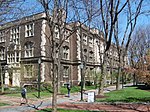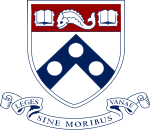Palestra

The Palestra, often called the Cathedral of College Basketball, is a historic arena and the home gym of the Penn Quakers men's and women's basketball teams, volleyball teams, wrestling team, and Philadelphia Big 5 basketball. Located at 235 South 33rd St. in Philadelphia, Pennsylvania on the campus of the University of Pennsylvania, near Franklin Field in the University City section of Philadelphia, it opened on January 1, 1927. The Palestra has been called "the most important building in the history of college basketball" and "changed the entire history of the sport for which it was built."The arena originally seated about 10,000, but now seats 8,725 for basketball. The Palestra is famed for its close-to-the-court seating with the bleachers ending at the floor with no barrier to separate the fans from the game. At the time of its construction, the Palestra was one of the world's largest arenas. It was one of the first steel-and-concrete arenas in the United States and also one of the first to be constructed without interior pillars blocking the view. Since its inception, the Palestra has hosted more games, more visiting teams, and more NCAA tournaments than any other facility in college basketball.
Excerpt from the Wikipedia article Palestra (License: CC BY-SA 3.0, Authors, Images).Palestra
South 32nd Street, Philadelphia
Geographical coordinates (GPS) Address Nearby Places Show on map
Geographical coordinates (GPS)
| Latitude | Longitude |
|---|---|
| N 39.951411 ° | E -75.188606 ° |
Address
The Palestra
South 32nd Street
19104 Philadelphia
Pennsylvania, United States
Open on Google Maps





